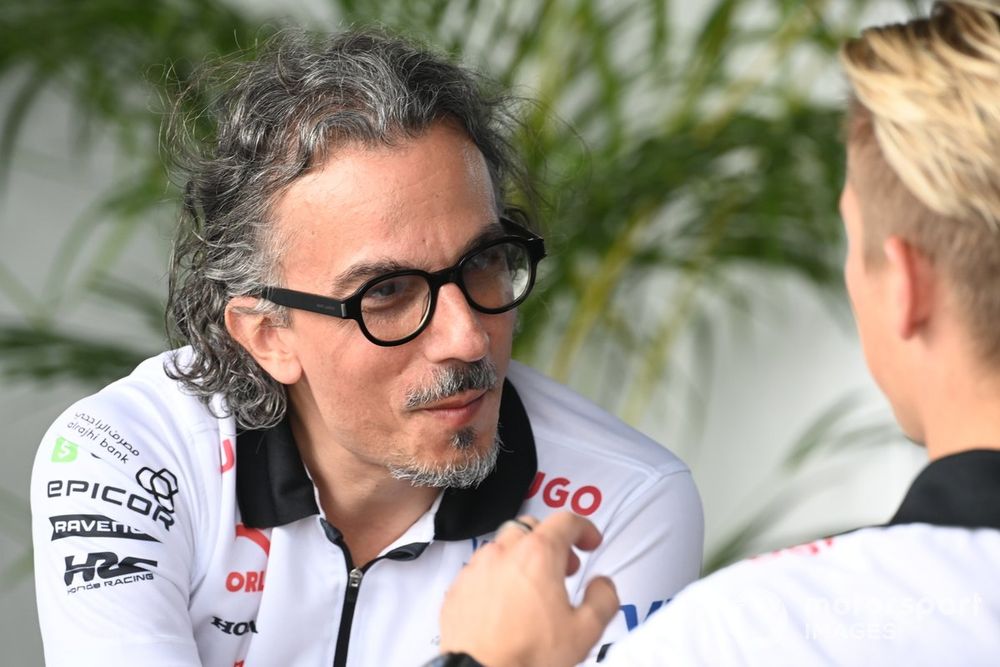Concerns over the partnership with Red Bull and RB, the former AlphaTauri team, have rumbled on in recent months, with McLaren’s Zak Brown particularly vocal over the potential issues arising from one entity owning two F1 teams.
Brown’s concerns stem from much more than staff transferring between the two teams and thereby sharing IP, and also relate to areas including political influence and race strategy.
But on a technical level, Mekies believes the design of its VCARB01 shows that the Anglo-Italian squad is still very much charting its own course rather than copying its parent team.
“Our car is not the Red Bull of last year, it simply isn’t, and if anyone feels like analysing it technically, they will see it,” Mekies said in an exclusive interview with Motorsport.com’s Italian edition.
“All our rivals, without exception, tried to find inspiration looking at the RB19, so did we, but we know from Formula 1 history that copying is not something unusual.
Laurent Mekies, Team Principal, RB F1 Team, Liam Lawson, Reserve Driver, Visa Cash App RB F1 Team
Photo by: Mark Sutton / Motorsport Images
“We see it even today in the paddock, no two cars are identical or even close to being identical, and I would add that after seeing all the cars in the pitlane I can say that visually ours is among those which look the least like the RB19.
“Nobody from Red Bull is interested in playing around in grey areas of the rules, and fortunately for us the rules are very clear. We share some components that the rules allow, as does half the pitlane.”
Mekies argues that because shareable components, such as gearboxes and suspension parts, are not key differentiators between teams, it means squads who are struggling to meet the cost cap without additional investment from their owners can continue to spend their budgets in more performance relevant areas.
“We have not seen a Williams on pole or a Haas on the podium, and this is because the shareable components did not include parts that were particularly significant in terms of performance, instead focusing on parts with a high development/cost ratio,” he explained.
“These regulations also aimed to favour a new business model, to offer the possibility for a Formula 1 team to compete on the track without obliging it to make very significant investments in certain components, such as transmissions.
“I would like to point out that even at such a favourable time for F1 on the financial front, our…
Click Here to Read the Full Original Article at Motorsport.com – Formula 1 – Stories…

